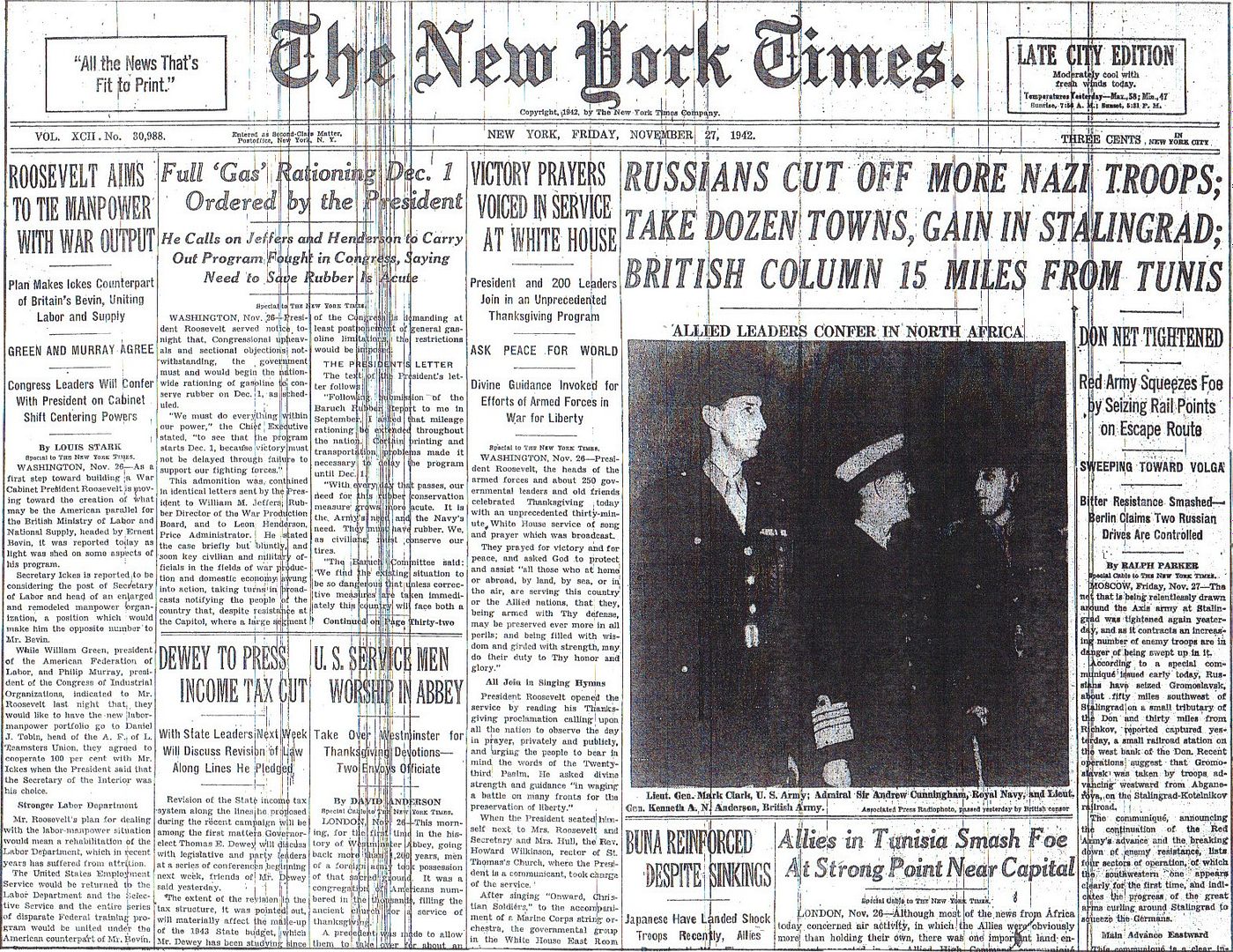
Posted on 11/27/2012 4:23:18 AM PST by Homer_J_Simpson

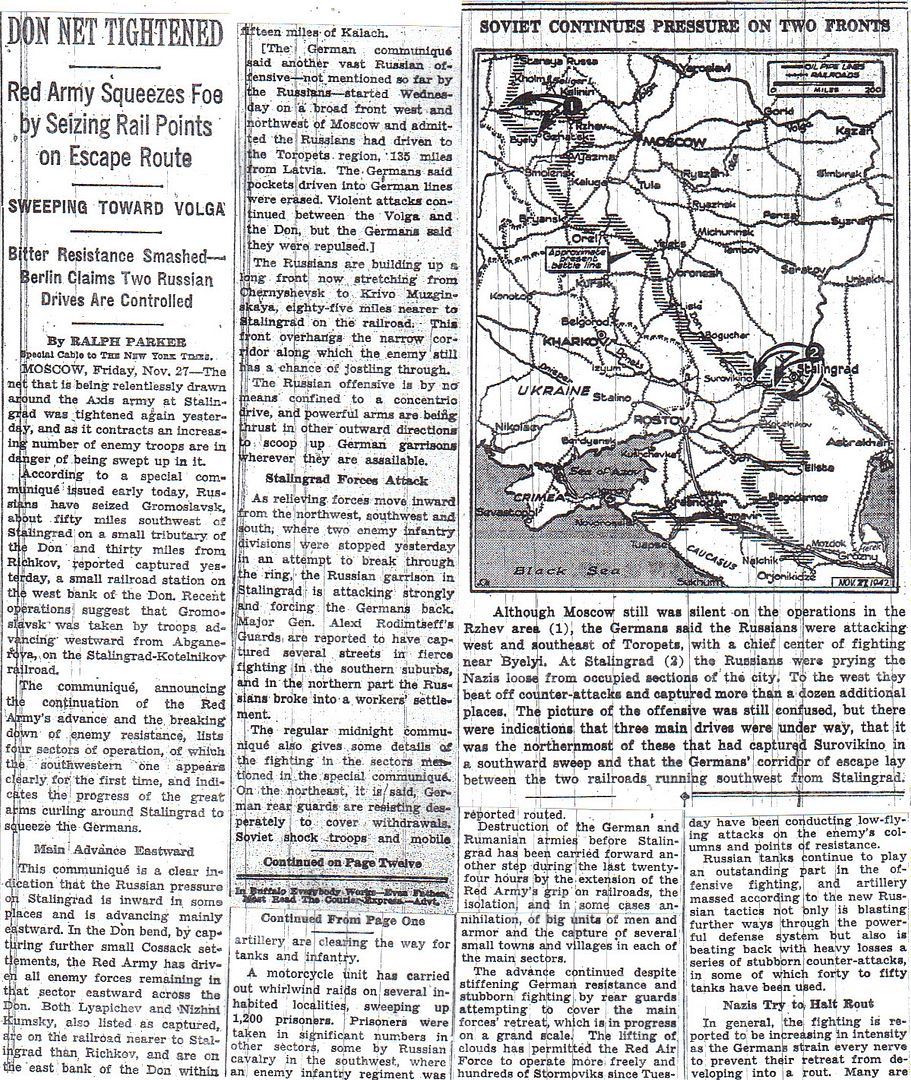
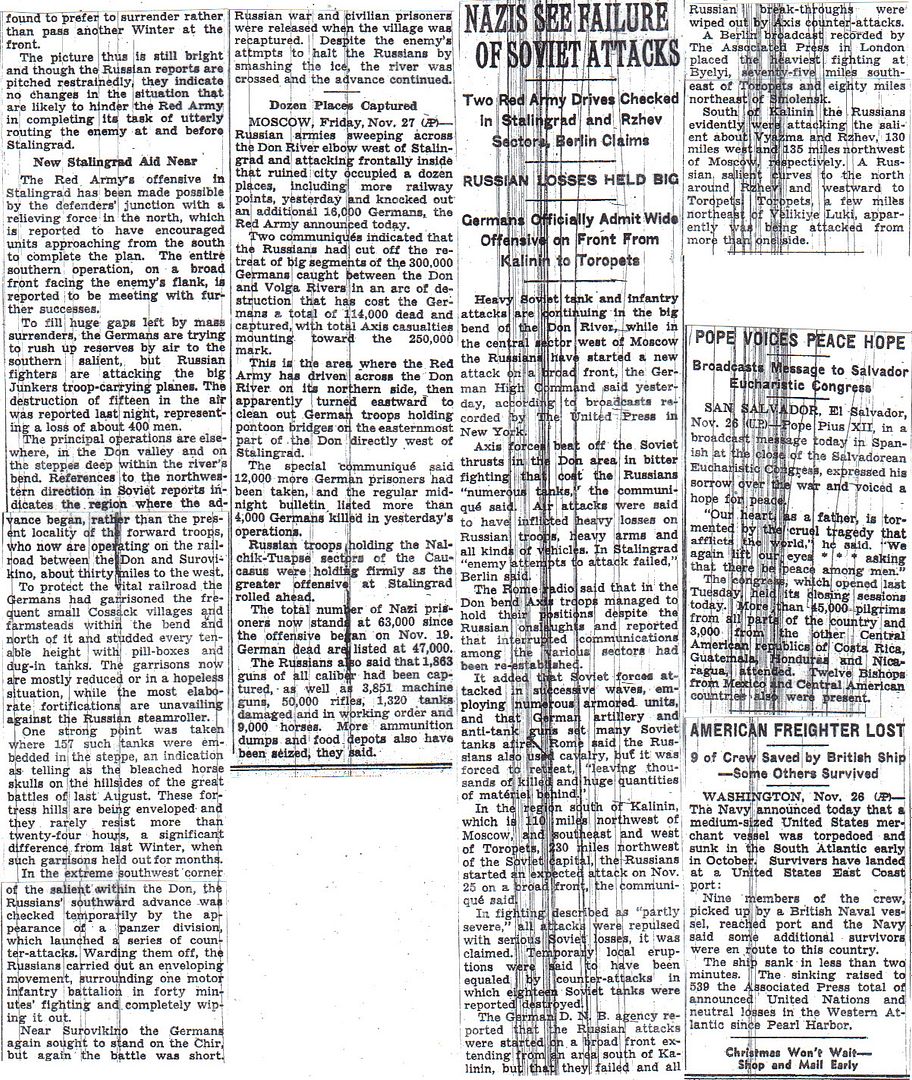
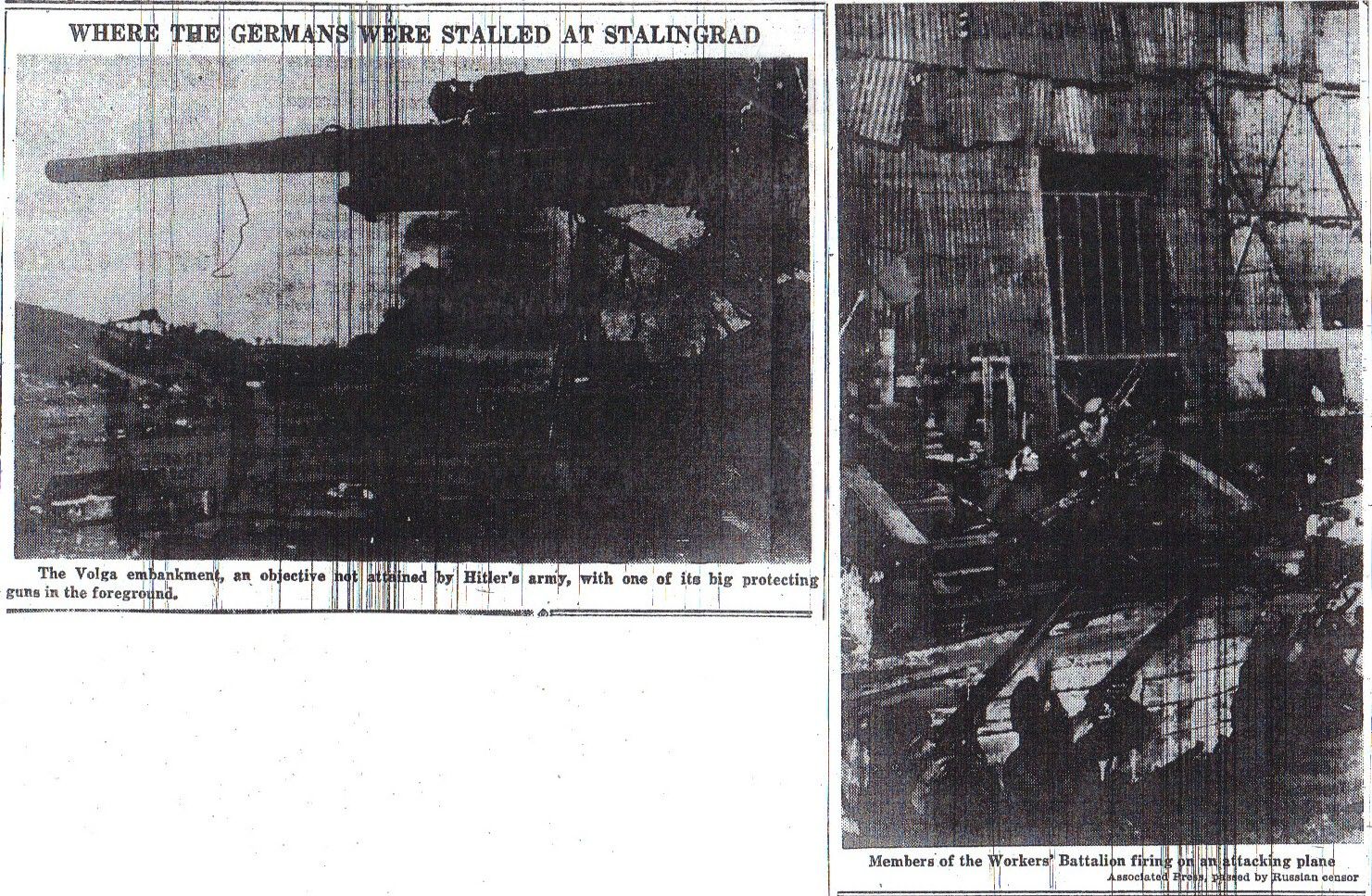
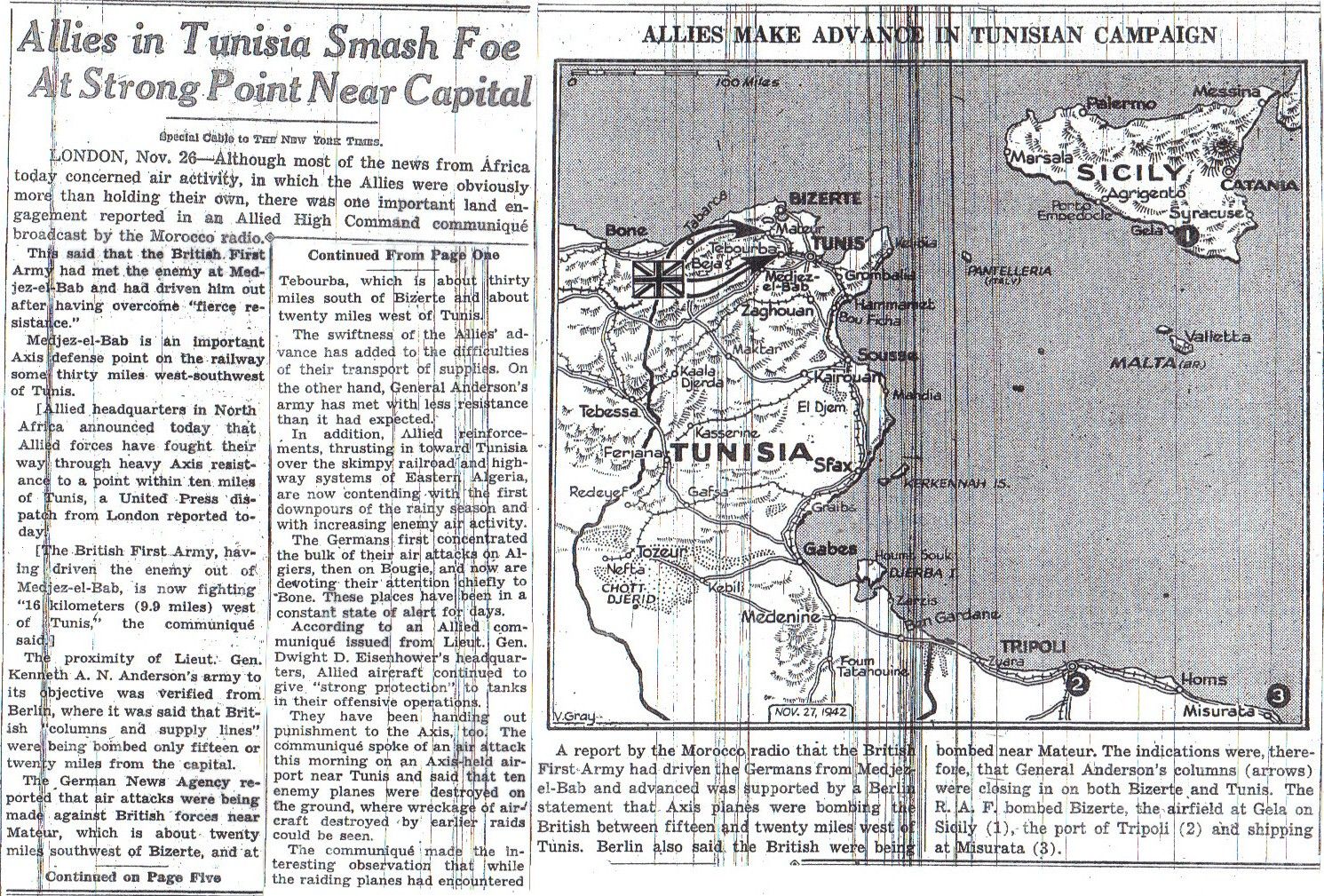
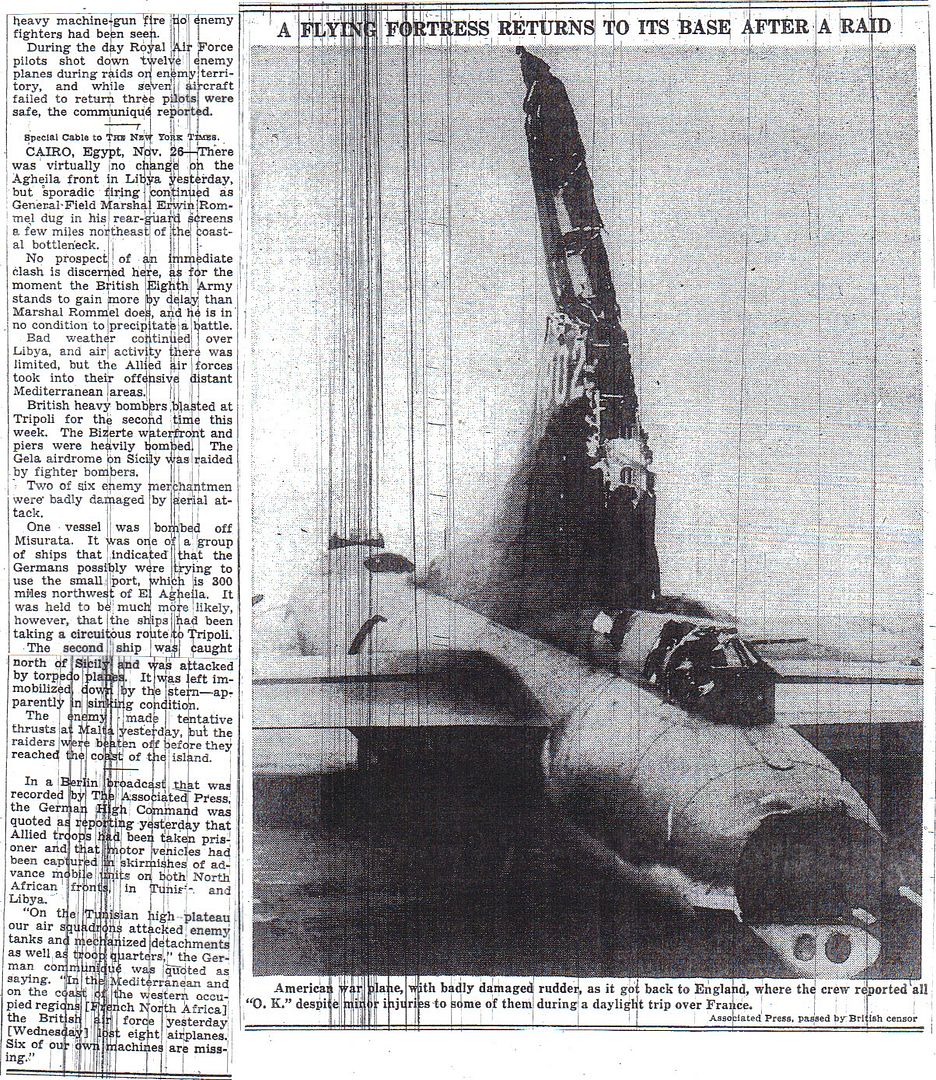
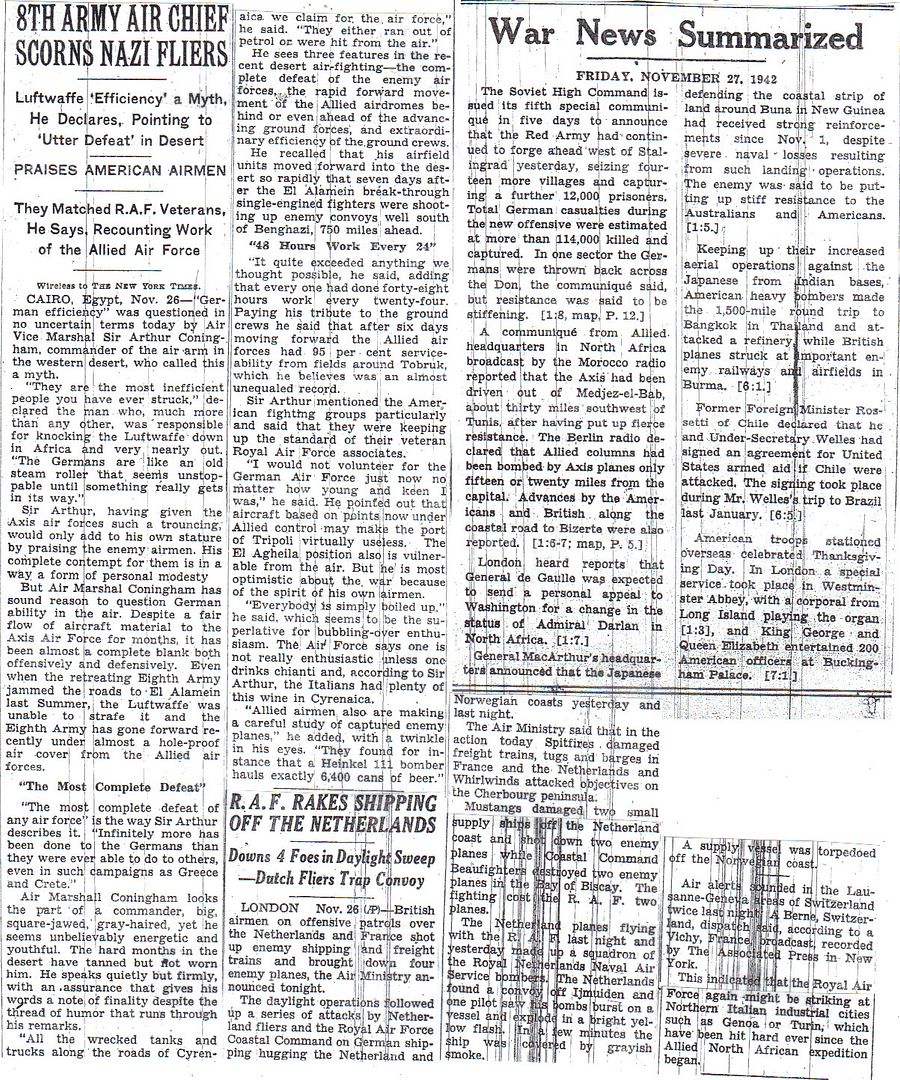

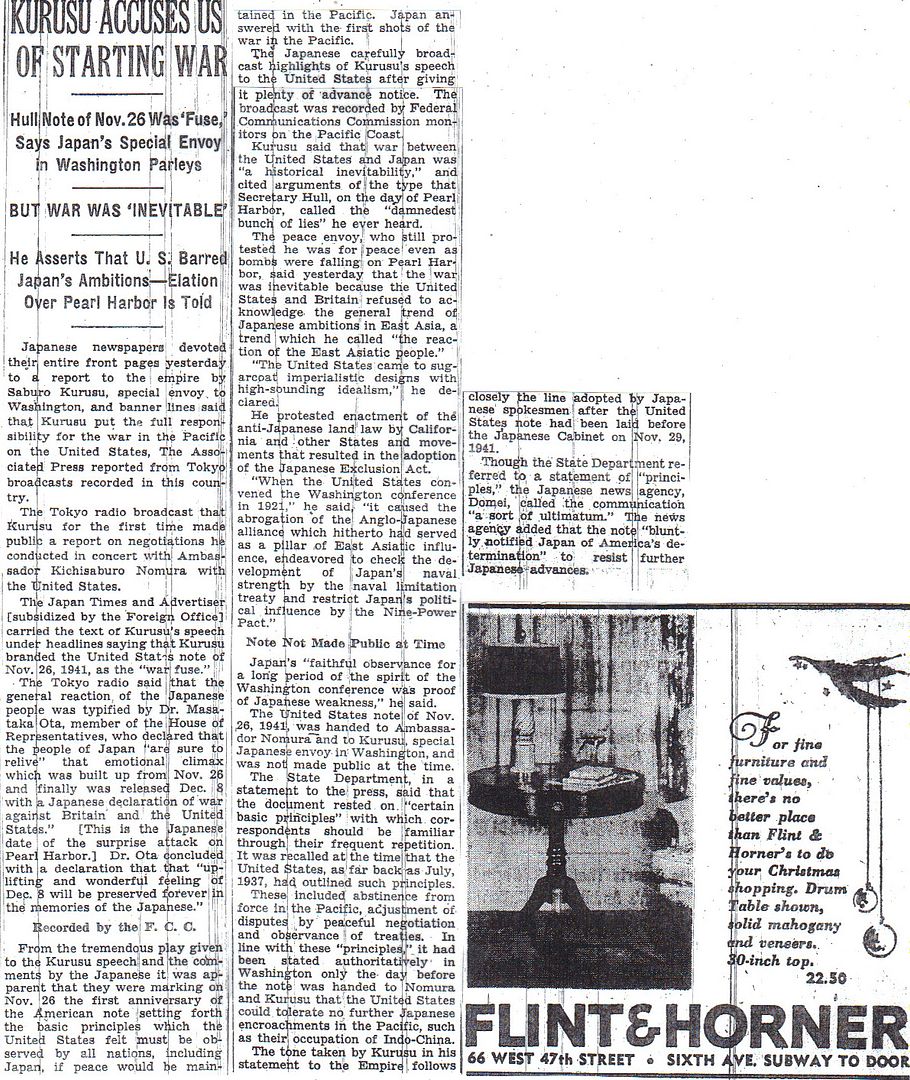
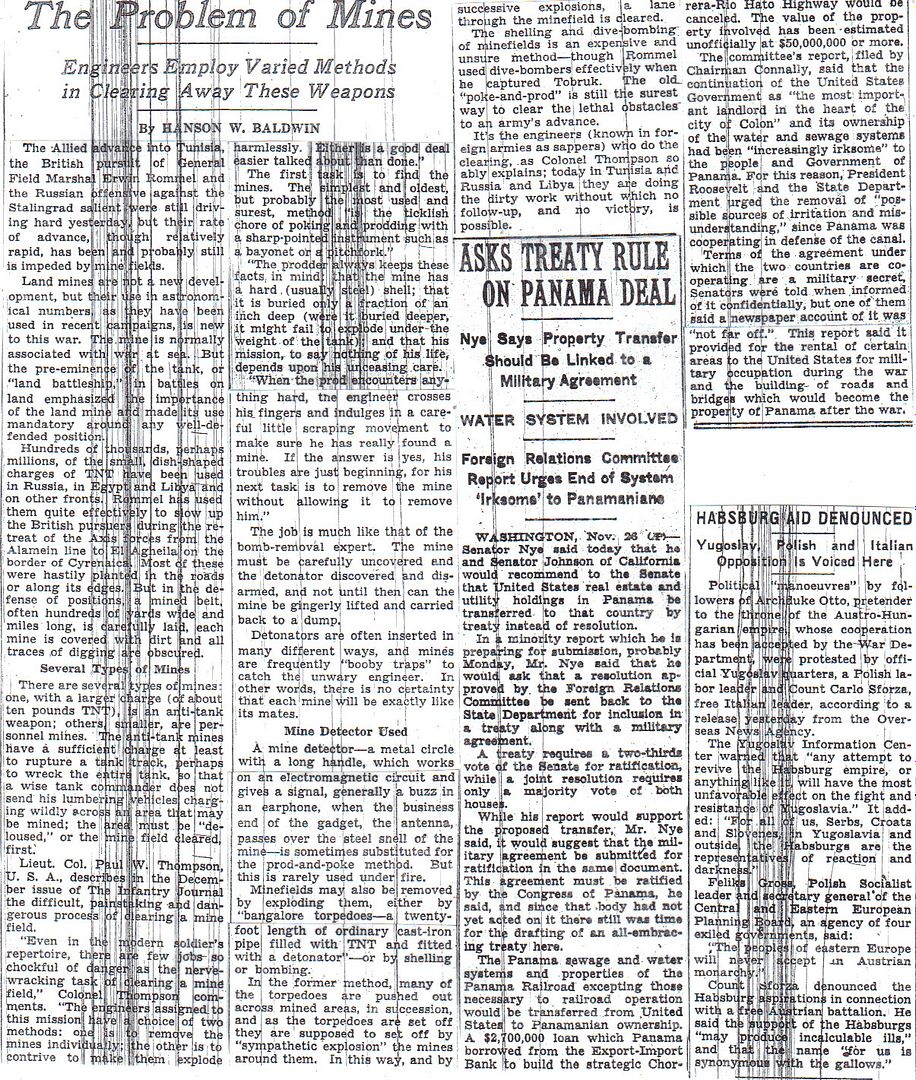

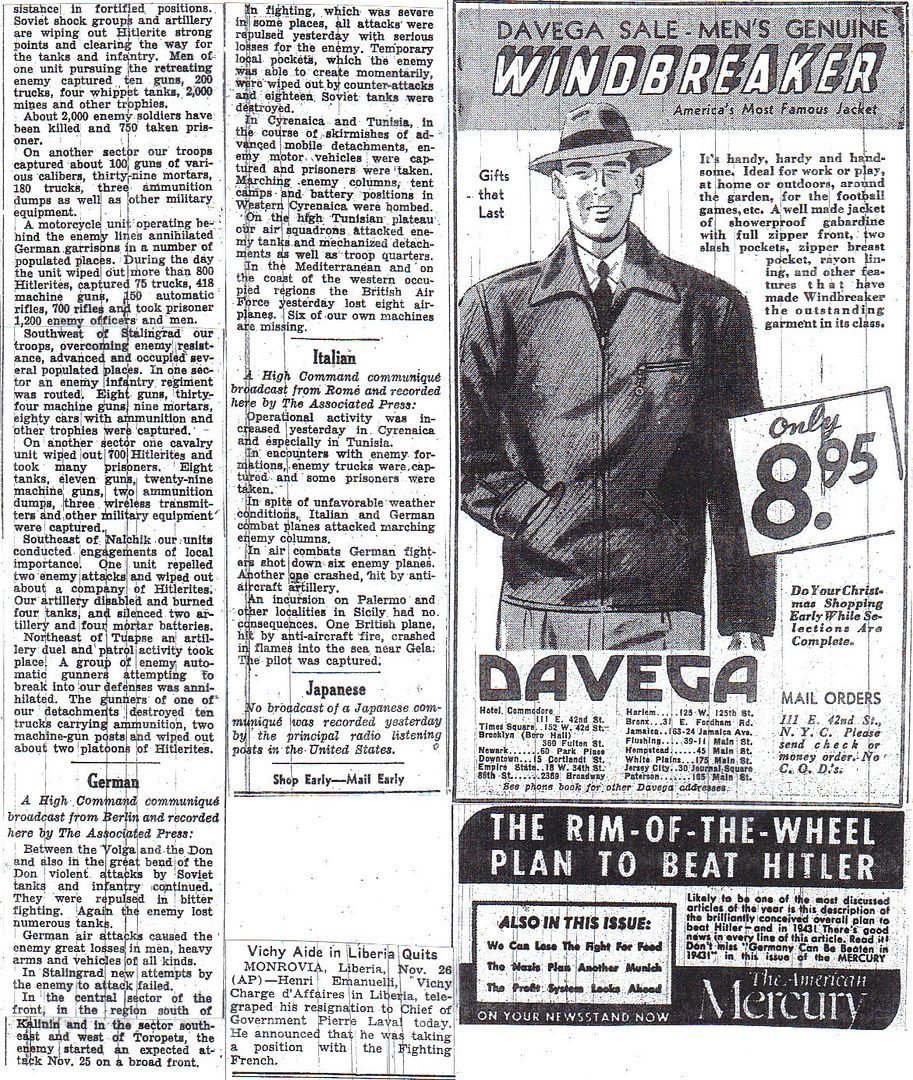
http://www.onwar.com/chrono/1942/nov42/f27nov42.htm
Vichy French Admiral scuttles fleet
Friday, November 27, 1942 www.onwar.com
The scuttled French Fleet [photo at link]
In Vichy France... The German 2nd Panzer Corps occupies Toulon, but the French fleet is scuttled by order of Admiral Labrode before it can fall into German hands. Three battleships, seven cruisers and 62 other craft including 16 submarines go down.
In North Africa... Tunisia, Allied forces capture Tebourba, 15 miles west of Tunis. Another Allied column is approaching Bizerta.
http://homepage.ntlworld.com/andrew.etherington/frame.htm
November 27th, 1942
UNITED KINGDOM: French Brigadier General Charles-André de Gaulle, Commander in Chief Free French Forces, broadcasts from London a message to the French people stating that the Toulon fleet had scuttled itself to be spared “the supreme shame of seeing French ships become the ships of the enemy.” “Patriotic instincts” had swayed the spirits of the crews and their commanders. (Jack McKillop)
Minesweepers HMS Combatant and Cynthia launched. (Dave Shirlaw)
FRANCE: Toulon: French sailors opened the seacocks today to scuttle the mighty French fleet and save it from German hands. Two battleships, a battle cruiser, seven cruisers, 29 destroyers and two submarines sank to the bottom of Toulon harbour as frustrated Germans watched.
Admiral Darlan had “advised” that the fleet should join the Allies in North Africa, but its commander, Admiral de Laborde, hesitated as he awaited confirmation from Petain. An emissary from Darlan carrying firm orders was captured by the Germans. A bewildered de Labonte remained unconvinced that the Germans were preparing to seize his ships - the Wehrmacht and the SS had shrewdly left the Toulon base unoccupied when they marched into Vichy France, although they had prepared a plan for capturing the fleet intact. The Germans put their plan into effect last night. The harbour was mined and E-boats were poised to land troops on the ships. When the sun rose this morning, some 70 craft would fight for neither side.
In London, Winston Churchill had hoped fervently for the fleet to come over. “If I could meet Darlan, much as I hate him, I would crawl on my hands and knees for a mile if I could get him to bring that fleet of his into the circle of Allied forces”, he said.
NETHERLANDS: During the day, two RAF Bomber Command (A-20) Bostons bomb a steel factory at Ijmuiden. During the night of 27/28 November, five RAF Bomber Command bombers lay mines off Texel Island. (Jack McKillop)
VICHY FRANCE is occupied by the German II SS Panzer Corps.
FRANCE: The port of Toulon is occupied by the German 7th Panzer Division, supported by the SS Battalion Langemarck (from the “Das Reich” division) and the 10th Panzer Division. Forewarned, Admiral Jean de Laborde, commander of the high seas fleet, orders his fleet scuttled and three battleships, seven cruisers 16 submarines and 50 other craft lie on the bottom of the harbor. He ensures that all ships scuttled will rest on even keels in the hope that some day they can be salvaged to sail for France again. It is not the French, but Italian engineers who are the first to salvage the ships. In nine months, Italian engineers are able to salvage 30 ships. They then confiscated the 30 vessels along with everything that is salvageable above the waterline. Some items confiscated are the aircraft catapult and turret armor of the Battle Cruiser Strasbourg, and the interior fittings of the battleship Dunkerque. Seven French destroyers and a submarine are either towed or sail on their own
power to ports in Italy. (Jack McKillop)
During the night of 27/28 November, one RAF Bomber Command aircraft lays mines in the River Gironde Estuary. (Jack McKillop)
GERMANY: RAF Bomber Command dispatches 32 Lancasters and Stirlings to bomb Stettin but they are recalled and jettison their bombs in the North Sea. (Jack McKillop)
DODECANESE ISLANDS: Six USAAF Ninth Air Force B-17 Flying Fortresses bomb Portolago Bay, Leros Island, hitting two vessels. (Jack McKillop)
TUNISIA: An allied column approaches Bizerta.
Tebourba, 20 miles (32 kilometers) west of Tunis, falls to the 11h Brigade of the 78th Division, British First Army. A German counterattack on the town, supported by tanks and dive bombers, is thrown back. Combat Command B, U.S. 1st Armored Division, is attached to the British First Army. Today also marks the first use of Tiger tanks in North Africa when the first arriving parts of s.Pz.Abt. 501 attack the British positions. (Jack McKillop).
HONG KONG: Ten B-25 Mitchells and 20+ P-40s of the USAAF Tenth Air Force’s China Air Task Force, the largest CATF effort in China to date, hit shipping and harbor installations at Hong Kong, firing warehouses and claiming two freighters and numerous barges sunk; a large force of fighters intercept during the return trip but are driven off by the escort; the Americans claim several airplanes shot down. (Jack McKillop)
PAPUA NEW GUINEA: Japanese reinforcements reach Buna losing one destroyer during the night.
A three-day lull begins as preparations are made for renewing the attack.
Thirteen Japanese “Zeke” fighters (Mitsubishi A6M, Navy Type 0 Carrier Fighters) bomb and strafe an Australian medical dressing station and a U.S. casualty clearing station at Soputa. Twenty two Australians and six Americans are killed. (Jack McKillop)
USAAF Fifth Air Force B-26 Marauders pound the Buna area, hitting buildings, the airfield, and other targets, as Allied ground forces prepare to renew attacks in the Buna-Gona area. (Jack McKillop)
AUSTRALIA: In the early hours of the morning, a flight of heavy Japanese bombers drop a large number of bombs on RAAF Coomalie Creek Airfield in the Northern Territory. Most of them land in the bush adjacent to the airfield. Only two or three bombs hit the runway, but the holes are easily filled in after the raid. (Jack McKillop)
CANADA: Corvette HMCS The Pas arrived Liverpool , Nova Scotia for refit.
Escort carrier HMCS Patroller laid down. (Dave Shirlaw)
TERRITORY OF ALASKA: USAAF Eleventh Air Force photo reconnaissance covers Kiska, Amchitka and Attu Islands. A ship attacked in Holtz Bay on Attu Island yesterday is observed lower in the water and still burning. (Jack McKillop)
U.S.A.: Destroyer escorts USS Bebas, Carlson, Donnell, Griswold, Steele laid down.
Corvette USS Pert launched. (Dave Shirlaw)
VENEZUELA: Diplomatic relations with Vichy France are severed. (Jack McKillop)
ATLANTIC OCEAN:
U-608 ran out of fuel when a storm delayed a scheduled refuelling rendezvous. The boat drifted until receiving enough fuel from U-521 to cover the distance to the tanker U-460.
U-176 sank SS Polydorus.
U-178 sank SS Jeremiah Wadsworth.
U-508 sank SS Clan Macfayden. (Dave Shirlaw)
http://en.wikipedia.org/wiki/Scuttling_of_the_French_fleet_in_Toulon
Scuttling of the French fleet in Toulon
"This title page of the Yugent-Shtime (Yiddish for Young Voice) portrays a hand crushing the symbol of Nazi oppression, the swastika.
Typed and duplicated in secret within the Warsaw Ghetto, the paper--the organ of the Bund's youth movement--reached hundreds of people.
Its writers and readers faced death if caught."
"The Donau steams with its cargo of Jews from Norway to Germany.
\ In November 1942 the ship sailed with 532 Jews aboard, 346 of whom were killed as soon as they reached Auschwitz.
Of the 763 Jews deported from Norway, on the Donau and on the Monte Rosa, only 24 survived the war.
Meanwhile, some 900 Jews evaded deportation by fleeing to neutral Sweden.
While the Norwegian church protested the deportations, puppet leader Vidkun Quisling aided the Nazis in making Norway 'Jew free.' "
"Numbering fewer than 2000 when Germany invaded Norway on April 9, 1940, Norway's Jews seemed an unlikely target for the 'Final Solution' as 1942 began, because ships, which were scarce, would be required to send them to Nazi killing centers in Poland.
That autumn, however, the German Navy made shipping available.
On November 26, 532 Norwegian Jews--including children, the elderly, and ill persons taken from hospitals--were deported from Oslo aboard the Donau.
"Rough seas delayed the dismally packed ship's arrival at the port of Stettin, Germany.
The Norwegian Jews were then sent by rail to Auschwitz-Birkenau.
They arrived at night on December 1.
A selection process sent 346 of them to the gas chambers immediately.
The remaining 186 were spared for labor, but within four months only about 20 were still alive.
Fewer still survived the Holocaust.
"In this relatively remote part of Europe, the Final Solution was quite thorough.
In all, 763 Jews were deported from Norway.
Only 24 returned.
Nazi Germany and its collaborators killed about 45 percent of the Norwegian Jews.
By comparison, 80 percent of Jews in both France and Italy survived."
At regular intervals we attack the northern bridges over the Don. The biggest of these is near the village of Kletskaja and this bridgehead on the west bank of the Don is most vigilantly defended by flak. Prisoners tell us that the H.Q. of a command is located here.
The bridgehead is constantly being extended and every day the Soviets pour in more men and material. Our destruction of these bridges delays these reinforcements, but they are able to replace them relatively quickly with pontoons so that the maximum traffic across the river is soon fully restored.
Up here on the Don the line is mainly held by Rumanian units.
Only in the actual battle area of Stalingrad stands the German 6th Army.
One morning after the receipt of an urgent report our Wing takes off in the direction of the bridgehead at Kletskaja. The weather is bad: low lying clouds, a light fall of snow, the temperature probably 20 degrees below zero; we fly low.
What troops are those coming towards us?
We have not gone more than half way. Masses in brown uniforms -are they Russians?
No. Rumanians. Some of them are even throwing away their rifles in order to be able to run the faster: a shocking sight, we are prepared for the worst.
We fly the length of the column heading north, we have now reached our allies' artillery emplacements. The guns are abandoned, not destroyed. Their ammunition lies beside them. We have passed some distance beyond them before we sight the first Soviet troops.
They find all the Rumanian positions in front of them deserted. We attack with bombs and gun-fire but how much use is that when there is no resistance on the ground?
We are seized with a blind fury horrid premonitions rise in our minds: how can this catastrophe be averted?
Relentlessly I drop my bombs on the enemy and spray bursts of M.G. fire into these shoreless yellow-green waves of oncoming troops that surge up against us out of Asia and the Mongolian hinterland. I haven't a bullet left, not even to protect myself against the contingency of a pursuit attack. Now quickly back to re-munition and refuel.
With these hordes our attacks are merely a drop in the bucket, but I am reluctant to think of that now. On the return flight we again observe the fleeing Rumanians; it is a good thing for them I have run out of ammunition to stop this cowardly rout.
They have abandoned everything; their easily defended positions, their heavy artillery, their ammunition dumps.
Their cowardice is certain to cause a debacle along the whole front. Unopposed, the Soviet advance rolls forward to Kalatsch. And with Kalatsch in their hands they now close a semi-circle round our half of Stalingrad. Within the actual area of the city our 6th Army holds its ground. Under a hail of concentrated artillery fire it sees the Red assault waves surge up incessantly against them. The 6th Army is "bled white," it fights with its back to a slowly crumbling wall: nevertheless it fights and hits back.
The front of Stalingrad runs along a plateau of lakes from north to south and then joins the steppe. There is no island in this ocean of plain for hundreds of kilometres until the fair-sized town of Elistra. The front curves East past Elistra. A German infantry motorized division based on the town controls the mighty waste of steppe. Our allies also hold the gap between this division and the 6th Army in Stalingrad.
The Red Army suspects our weakness at this point, especially in the northern sector of the lake district, the Soviets break through westwards.
They are trying to reach the Don! Another couple of days and the Russians are on the river. Then a Red thrust forces a wedge in our lines to the northwest. They are trying to reach Kalatsch.
This plainly spells the impending doom of the 6th Army. The two Russian attacking forces join hands at Kalatsch and then the ring round Stalingrad is closed. Everything happens with uncomfortable speed, many of our reserves are overwhelmed by the Russians and trapped in their pincer movement. During this phase one deed of anonymous heroism succeeds another. Not one German unit surrenders until it has fired its last revolver bullet, its last hand grenade, without carrying on the fighting to the bitter end.
Stuka Pilot-Han Ulrich Rudel
http://en.wikipedia.org/wiki/Hans-Ulrich_Rudel
Hans-Ulrich Rudel (2 July 1916 – 18 December 1982) was a Stuka dive-bomber pilot during World War II and a member of the Nazi Party. The most highly decorated German serviceman of the war, Rudel was one of only 27 military men to be awarded the Knight’s Cross of the Iron Cross with Oak Leaves, Swords and Diamonds, and the only person to be awarded the Knight’s Cross of the Iron Cross with Golden Oak Leaves, Swords and Diamonds (Ritterkreuz des Eisernen Kreuzes mit goldenem Eichenlaub, Schwertern und Brillanten), Germany’s highest military decoration.
Rudel’s input was used during the development of the A-10 ground attack aircraft.
Maybe if Rudel’s masters had bothered to equip the Romanians with something that was more effective against T-34s than a handful of rocks, they might have stayed in their positions and fought.
As it was, many Romanian units did hold their ground until they were surrounded and overwhelmed.
You're absolutely right-many Rumanian divisions fought to the death considering that death was preferable to what would happen if they surrendered to the Russians. Hitler had plenty of warning about the Stalingrad offensive and what part of the front it would take place at. The Germans were quite adept at blaming others for their screw-ups.
Occupying the French Riviera must have been the best job in the German Army.
Disclaimer: Opinions posted on Free Republic are those of the individual posters and do not necessarily represent the opinion of Free Republic or its management. All materials posted herein are protected by copyright law and the exemption for fair use of copyrighted works.